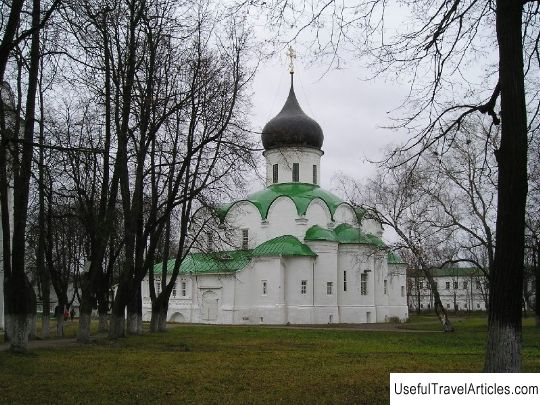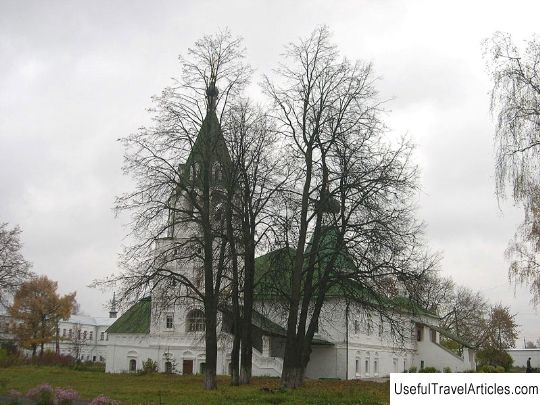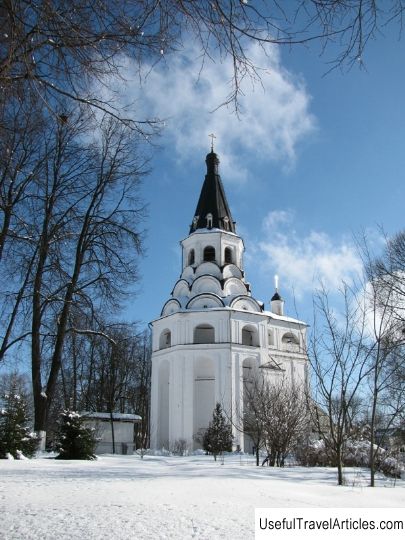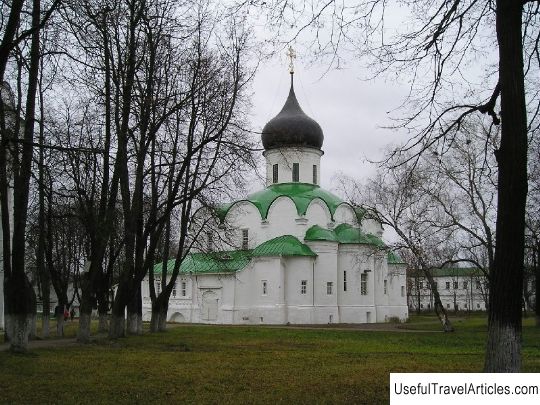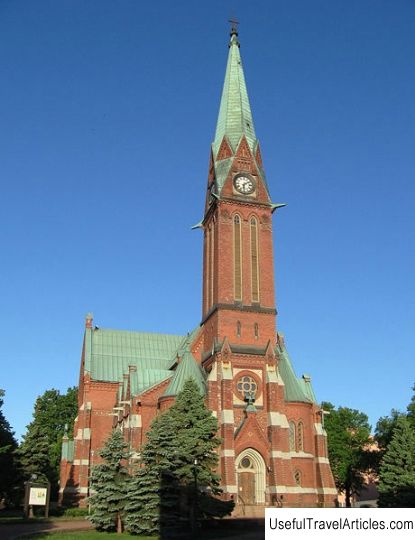Assumption Church of the Alexander Kremlin description and photos - Russia - Golden Ring: Alexandrov
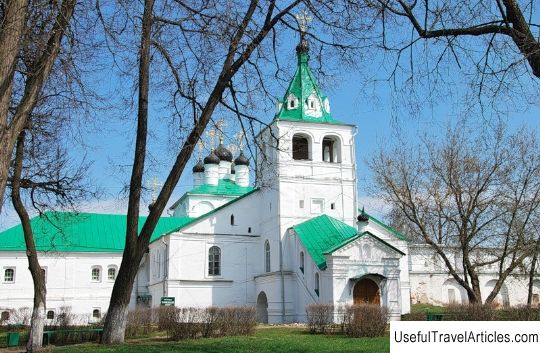
Assumption Church of the Alexander Kremlin description and photos - Russia - Golden Ring: Alexandrov. Detailed information about the attraction. Description, photos and a map showing the nearest significant objects. Photo and descriptionThe Assumption Church is located in the city of Alexandrov, Vladimir region, on the territory of the Alexander Kremlin. The construction of the church dates back to the first quarter of the 16th century. (1525), it is assumed that the temple was the home church of Prince Vasily III. Originally, the quadrangle was covered by a system of vaults, and four pillars supported it. It ended with one chapter, around which, presumably, kokoshniks were located. Later, the five-domed building, the addition of the bell tower and the refectory (in the 17th century) somewhat changed it. The church has two chapels, typical of all Vladimir churches (the south chapel is in honor of John the Baptist, the north chapel is in honor of Nicholas the Wonderworker). By the time the nuns settled here, the church was badly destroyed in the basement and for forty years (from 1610 to 1650) stood "powdered". The Slobozhanians called the church "Assumption in the Hills" because of the appearance of the ruins of the 16th century palaces. The galleries were located on three sides of the temple. On the fourth, northern side, the palace chambers of Vasily III adjoined it. The first alteration of the temple, which consisted of laying open galleries with bricks, was made under Ivan the Terrible. In 1663-1666, a two-story refectory and a bell tower were added to the quadrangle from the west. In 1667, the vault was altered in the quadrangle, a five-domed one was made, two western pillars were dismantled. On the basis of the northern chapel, a new chapel was built - the chapel of Mary of Egypt - in honor of the first wife of Alexei Mikhailovich, Queen Maria Ilyinichna, the benefactor of the monastery. A little later, the northern two-story vaulted chamber was added on the site of the dismantled courtyard of Vasily III. During the period of the monastery's operation, the cellars under the church were used as cellars and were filled with ice, which could not but lead to the building's settlement and the appearance of cracks. In 1753-1755. the Moscow gofintendent's office carried out major repairs. The funds were allocated according to a note by Elizabeth Petrovna on May 16, 1754 To strengthen the vaults, the arches in the basements were laid with stones. Perhaps at the same time they laid a cellar with an exit under the Assumption Church, which is mentioned in the "fairy tale" of Cornelius in 1675 and which can be understood as an underground passage. In the 1930s. architect-restorer P.D. Baranovsky in the basements, several late partitions were dismantled and the basement was opened. In the 1960s. restoration work continued again. In the northern chamber, later extensions were given, distorting the building. Plaster was knocked off the outer walls, making it difficult to ventilate the brick walls. The original window openings have been restored. The roof and chapters were repaired, and the crosses were gilded. In the basement of the Assumption Church, inscriptions were found scrawled on the walls: "men", "Jacob" and a drawing of a church with a screw head. In the last century, various guesses have been expressed about their origin. Someone says that they date back to the time of Ivan the Terrible and associates the famous architect Posnik Yakovlev with them. Someone attributes them to Yakov Buev or Yakov Alekseev, who in different years worked on the temple. In the refectory chamber on the left at the entrance to the left - a tiled old stove, decorated with glazed tiles with patterns in green and blue tones. According to legend, the stove was moved here from the prayer cell of Ivan the Terrible. In 1980-90. in the Assumption Church, repair and restoration work was carried out, which were aimed at preventing the active stage of the destruction of the church. For the entire period of its existence, the Assumption Church was very actively used for economic needs, and for this it was not designed by the architects. The wall cladding was neatly laid out of white stone and filled with debris between the front sides of the walls. Besides, in ancient times, kvass was prepared in basements, and in winter they were stuffed with snow. Such an onslaught of moisture did not contribute to the strength and preservation of the structures. To this day, serious deformations from active economic use are very noticeable, especially in the northern aisle of the church. Already today, water heating has been arranged in the church in order to use the building for a museum exhibition. This circumstance added subsidence cracks on the west porch as well. The overloading of the northern tent by the weight of the stored exhibits and by the stoves led to sagging and cracks in the vaults. The necessary work to strengthen the building structures was completed. But the problem of excess moisture in the basements of the church has not lost its relevance. The overloading of the northern tent by the weight of the stored exhibits and by the stoves led to sagging and cracks in the vaults. The necessary work to strengthen the building structures was completed. But the problem of excess moisture in the basements of the church has not lost its relevance. The overloading of the northern tent by the weight of the stored exhibits and by the stoves led to sagging and cracks in the vaults. The necessary work to strengthen the building structures was completed. But the problem of excess moisture in the basements of the church has not lost its relevance.        We also recommend reading Holy Resurrection Cathedral description and photos - Belarus: Brest Topic: Assumption Church of the Alexander Kremlin description and photos - Russia - Golden Ring: Alexandrov. |
